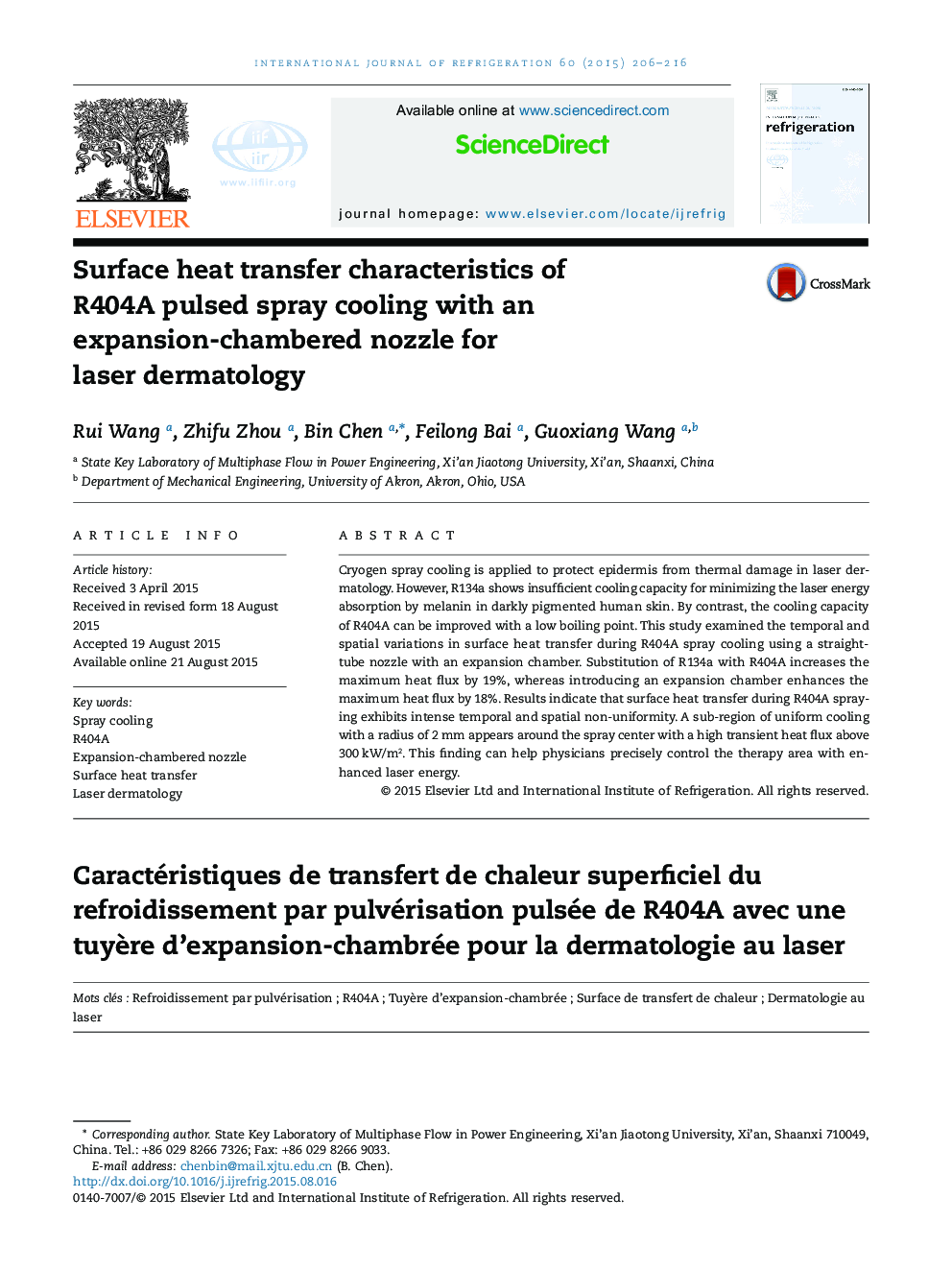| Article ID | Journal | Published Year | Pages | File Type |
|---|---|---|---|---|
| 790102 | International Journal of Refrigeration | 2015 | 11 Pages |
•R404A spray cooling is studied using a straight-tube nozzle with expansion chamber.•The substitution of R134a with R404A increases the maximum heat flux by 19%.•The introduction of expansion chamber enhances the maximum heat flux by 18%.•R404A spray cooling exhibits intense temporal and radial non-uniformity.•A region of uniform cooling with a radius of 2 mm appears around the spray center.
Cryogen spray cooling is applied to protect epidermis from thermal damage in laser dermatology. However, R134a shows insufficient cooling capacity for minimizing the laser energy absorption by melanin in darkly pigmented human skin. By contrast, the cooling capacity of R404A can be improved with a low boiling point. This study examined the temporal and spatial variations in surface heat transfer during R404A spray cooling using a straight-tube nozzle with an expansion chamber. Substitution of R134a with R404A increases the maximum heat flux by 19%, whereas introducing an expansion chamber enhances the maximum heat flux by 18%. Results indicate that surface heat transfer during R404A spraying exhibits intense temporal and spatial non-uniformity. A sub-region of uniform cooling with a radius of 2 mm appears around the spray center with a high transient heat flux above 300 kW/m2. This finding can help physicians precisely control the therapy area with enhanced laser energy.
